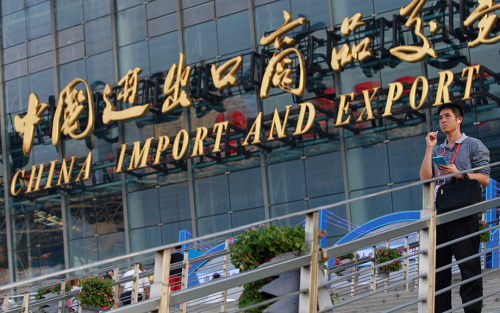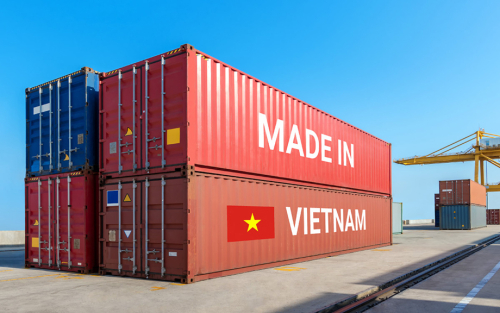Why Does the U.S. Always Run a Trade Deficit?

The obvious answer to the question of why the United States runs a trade deficit is that its export sales have not kept up with its demand for imports. A less obvious answer is that the imbalance reflects a macroeconomic phenomenon. Using national accounting, one can show deficits are also due to a persistent shortfall in domestic saving that requires funds from abroad to finance domestic investment spending. Reducing the trade imbalance therefore requires both more exports relative to imports and a narrowing of the gap between saving and investment spending.
Will the U.S. Dollar Continue to Dominate World Trade?

There are around 180 currencies in the world, but only a very small number of them play an outsized role in international trade, finance, and central bank foreign exchange reserves. In the modern era, the U.S. dollar has a dominant international presence, followed to a lesser extent by the euro and a handful of other currencies. Although the use of specific currencies is remarkably stable over time, with the status of dominant currencies remaining unchanged over decades, there have been decisive shifts in the international monetary system over long horizons. For example, the British pound only lost its dominant currency status in the 1930s, well after Britain stopped being the leading world economy. In a new study, we show that the currency that is used in international trade transactions is an active firm-level decision rather than something that is just fixed. This finding raises the question of what factors could augment or reduce the U.S. dollar’s dominance in world trade.
When Will U.S. Exports Take Off?

The economic recovery from the COVID-19 pandemic has been uneven across countries and sectors. While U.S. imports have rebounded to surpass their level before the collapse in 2020, U.S. exports remain far below their pre-pandemic level. This asymmetry in part reflects the different sectoral compositions of imports and exports. U.S. imports are driven by goods trade, while exports rely more heavily on services trade. A key component of services exports is foreign travel to the United States, which has dried up due to the suspension of nonessential travel imposed in March 2020. However, U.S. exports may now be at a turning point given the reopening of U.S. borders to all vaccinated travelers on November 8. We analyze the trajectory of U.S. services and how the lifting of the travel ban might contribute to the rebound of U.S. services exports.
An Update on the U.S.–China Phase One Trade Deal

A Liberty Street Economics post from last summer by Matthew Higgins and Thomas Klitgaard contained an assessment of the Phase One trade agreement between the United States and China. The authors of that note found that, depending on how successfully the deal was implemented, the impact on U.S. economic growth could have been substantially larger than originally foreseen by many of its critics, as a result of the fact that the pandemic had depressed the U.S. economy far below its potential growth path. Here we take another look at these considerations with the benefit of an additional year’s worth of trade data and a much different economic environment in the United States.
COVID‑19 Has Temporarily Supercharged China’s Export Machine
Reconsidering the Phase One Trade Deal with China in the Midst of the Pandemic

It may be hard to remember given the pandemic, but trade tensions between the United States and China eased in January 2020 with the inking of the Phase One agreement. Under the deal, China committed to a massive increase in its purchases of U.S. goods and services, with targets set for various types of products. At the time of the pact, the U.S. economy was operating near full capacity, and any increase in U.S. exports stemming from the pact would likely have resulted in only a small boost to growth. The environment is now starkly different, with the U.S. economy operating far below potential. While the promised increase in Chinese purchases seems unlikely to be achieved, any appreciable increase in exports from the agreement could deliver a meaningful boost to the economy.
Are U.S. Tariffs Turning Vietnam into an Export Powerhouse?

The imposition of Section 301 tariffs on about half of China’s exports to the United States has coincided with a fall in imports from China and gains for other countries. The U.S.-China trade conflict also appears to be accelerating an ongoing shift in foreign direct investment (FDI) from China to other emerging markets, particularly in Asia. Within the region, Vietnam is often cited as a clear beneficiary of these trends, a rising economy that could displace China, to some extent, in global supply chains. In this note, we examine the data and conclude that Vietnam is indeed gaining market share, but is too small to replace China anytime soon.
Do Import Tariffs Help Reduce Trade Deficits?

Import tariffs are on the rise in the United States, with a long list of new tariffs imposed in the last few months—25 percent on steel imports, 10 percent on aluminum, and 25 percent on $50 billion of goods from China—and possibly more to come on China and the auto industry. One of the objectives of these new tariffs is to reduce the U.S. trade deficit, which stood at $568.4 billion in 2017 (2.9 percent of GDP). The fact that the United States imports far more than it exports is viewed by some as unfair, so the idea is to try to reduce the amount that the nation imports from the rest of the world. While more costly imports are likely to reduce the quantity and value of imports into the United States, the story does not stop there, because we cannot presume that the value of exports will remain unchanged. In this post, we argue that U.S. exports will also fall, not only because of other countries’ retaliatory tariffs on U.S. exports, but also because the costs for U.S. firms producing goods for export will rise and make U.S. exports less competitive on the world market. The end result is likely to be lower imports and lower exports, with little improvement in the trade deficit.
U.S. Exporters Could Face High Tariffs without NAFTA
The Effect of the Strong Dollar on U.S. Growth
The recent strengthening of the U.S. dollar has raised concerns about its impact on U.S. GDP growth.












 RSS Feed
RSS Feed Follow Liberty Street Economics
Follow Liberty Street Economics